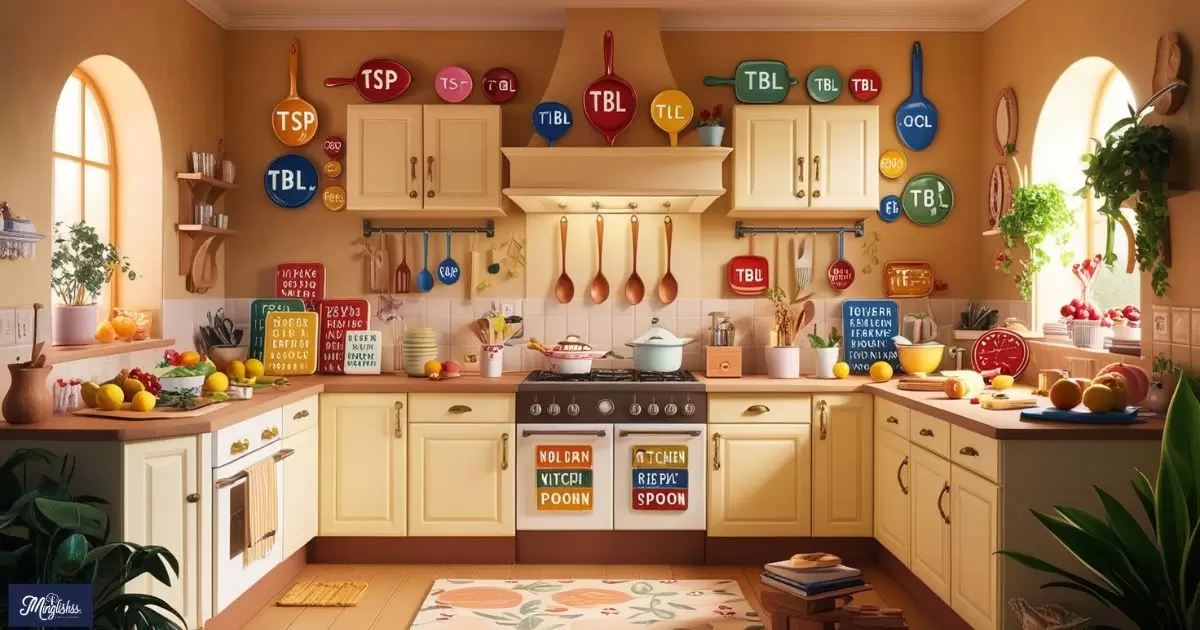In the bustling world of cooking, kitchen abbreviations are essential for efficiency and accuracy. Whether you’re a home cook or a professional chef, understanding these abbreviations can help you navigate recipes more quickly and avoid mistakes.
These shortcuts save time and space in recipes, making your cooking experience smoother and more enjoyable.Ready to streamline your cooking process? Learning kitchen abbreviations will not only make your meal preparations faster but also enhance your overall cooking efficiency.
Dive into this guide to discover the most useful abbreviations and how to apply them in your daily cooking routines. Embrace these handy shortcuts and elevate your kitchen skills.In the kitchen, abbreviations serve as crucial tools for simplifying recipes and improving efficiency.
From measuring ingredients to understanding cooking techniques, knowing these abbreviations can make a significant difference in your cooking routine. This guide will explore common kitchen abbreviations, their meanings, and how they can improve your culinary practices.
Common Kitchen Abbreviations
Understanding kitchen abbreviations is key to efficient cooking. Here are some essential abbreviations you should know:
tbsp
“tbsp” stands for tablespoon. It’s a common unit of measurement used for both dry and liquid ingredients. For example, recipes often call for “1 tbsp of sugar,” which means you should use one tablespoon of sugar.
tsp
“tsp” stands for teaspoon. This abbreviation is used for smaller quantities compared to tablespoons. For instance, “2 tsp of salt” indicates you need two teaspoons of salt.
cup
“cup” is used to measure both dry and liquid ingredients. For example, “1 cup of flour” refers to one cup of flour. This is a standard measurement in many recipes.
oz
“oz” stands for ounce. This abbreviation is used for measuring both weight and volume. For example, “8 oz of cheese” indicates eight ounces of cheese, which could be measured by weight or volume depending on the ingredient.
lb
“lb” stands for pound. It is used for measuring weight. For instance, “2 lb of chicken” means two pounds of chicken.
qt

“qt” stands for quart. This unit of measurement is commonly used for liquids. For example, “4 qt of milk” indicates four quarts of milk.
ml
“ml” stands for milliliter. It’s a metric unit used for measuring liquid ingredients. For instance, “100 ml of water” refers to a hundred milliliters of water.
g
“g” stands for gram. It is a metric unit used for measuring weight. For example, “200 g of sugar” means two hundred grams of sugar.
min
“min” stands for minute. It’s used to indicate time in cooking. For instance, “5 min” means five minutes of cooking or preparation time.
hr
“hr” stands for hour. This abbreviation is used for longer cooking times. For example, “2 hr” means two hours of cooking or marinating time.
Why Use Abbreviations?
Why are kitchen abbreviations important? Here’s why:
- Efficiency: Abbreviations simplify and speed up the cooking process by reducing the amount of text in recipes.
- Accuracy: Standardized abbreviations help ensure that measurements are clear and consistent, reducing the risk of mistakes.
- Space-Saving: Using abbreviations can save space in recipe cards, cookbooks, and labels, making them more user-friendly.
Common Abbreviations for Received: Simplifying Your Communication
Use in Example Sentences
Full
- Add 1 tablespoon of olive oil to the pan.
- Stir in 2 teaspoons of vanilla extract.
- Measure 1 cup of flour for the dough.
- Pour 8 ounces of broth into the pot.
- Cook the meat for 30 minutes until tender.
Abbreviation
- Add 1 tbsp of olive oil to the pan.
- Stir in 2 tsp of vanilla extract.
- Measure 1 cup of flour for the dough.
- Pour 8 oz of broth into the pot.
- Cook the meat for 30 min until tender.
Answers to Key Questions About Efficient Cooking
How do I know when to use tablespoons versus teaspoons?
Tablespoons (tbsp) and teaspoons (tsp) are used based on the quantity needed. Generally, tablespoons are used for larger quantities, while teaspoons are used for smaller amounts. For example, baking recipes might call for tablespoons for flour but teaspoons for baking powder.
Can I substitute one type of measurement for another?
Substituting measurements should be done carefully. For example, 1 tablespoon is equal to 3 teaspoons. However, weight and volume conversions are more complex and depend on the ingredient’s density.
Are there any other common abbreviations used in cooking?
Yes, other common abbreviations include “pt” for pint, “b” for boil, and “ch” for chop. Familiarizing yourself with these can further enhance your cooking efficiency.
How can abbreviations improve my cooking efficiency?
Abbreviations streamline recipe instructions, making them quicker to read and follow. This helps in managing time better and avoiding errors during meal preparation.
What if I encounter an abbreviation I don’t understand?
Look up the abbreviation or consult a cooking guide. Most cookbooks and online resources provide explanations for abbreviations used in recipes.
Are abbreviations the same across different regions?
Abbreviations can vary slightly based on regional cooking practices. For instance, metric units are more commonly used in some countries, while others may use imperial measurements.
Conclusion
Mastering kitchen abbreviations can greatly enhance your cooking efficiency and accuracy. By understanding and using these shortcuts, you can streamline your meal preparations, avoid mistakes, and make your cooking experience more enjoyable. Embrace these abbreviations to simplify your recipes and improve your culinary skills.

Hi, I’m Isabel: I’m passionate about turning language learning into a fun adventure. I believe in making every word exciting and memorable.










